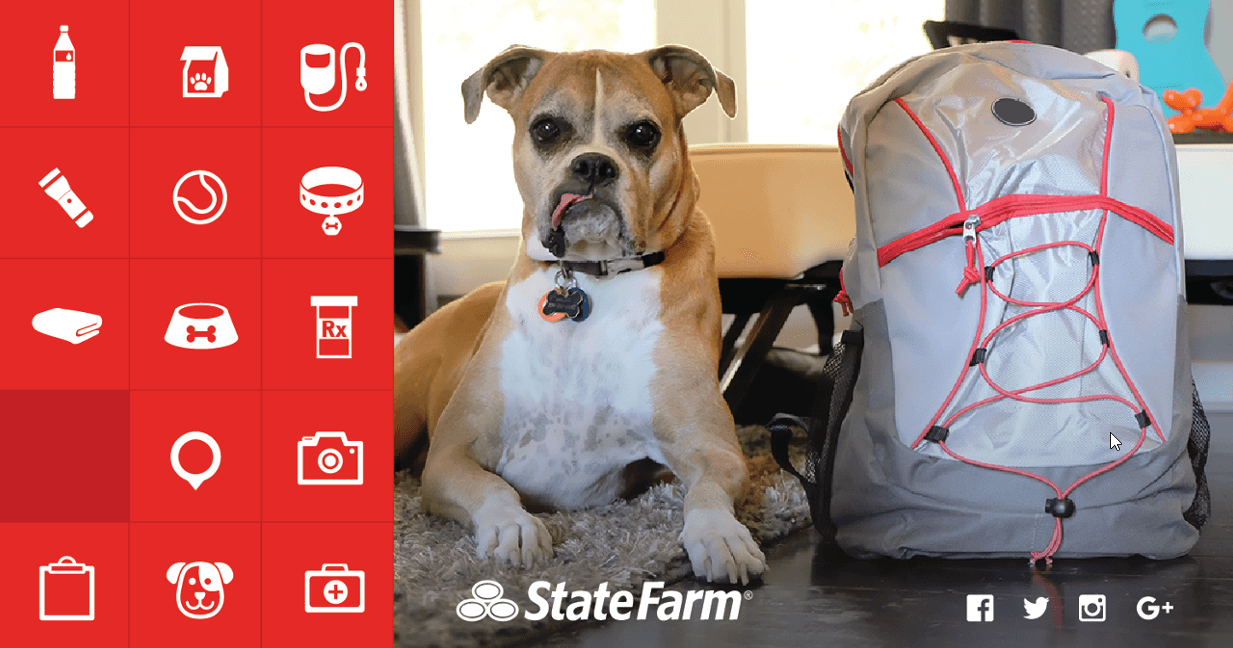I grew up on a farm in Iowa, so preparing for spring severe weather and tornadoes was normal. We had dogs, barn cats, horses, and other livestock to keep safe, so we had to have a plan. Everyone in the family knew what to do even before the weather radio siren went off. Our animals and livestock weren’t just left to fend for themselves because we cared about their safety just as much as we cared about our own.
It is critical for people to become familiar with the types of disasters that could affect them and consider options for providing care for humans and pets. Every storm or natural disaster is unique, so advance planning for a variety of scenarios can make all the difference when it comes to safety and recovery.
It’s equally critical that you pay attention to your pets’ emotional wellbeing during this stressful time. A calm pet who can adapt to stressful and unfamiliar surroundings is far less likely to escape or become destructive during evacuation, in a temporary shelter, or in a hotel.
The Practical Basics
State Farm® has great practical resources to help you and your family prepare for the worst case scenario. Here are a few of their recommendations:
- You will increase your chances of being reunited with pets who get lost by having them identified.
- Make sure your pets wear collars and tags with up-to-date contact information.
- Microchip your pets. Always be sure to register the microchip with the manufacturer and keep your contact information up to date with the microchip company.
- Purchase a pet carrier for each of your pets and write your pet’s name, your name, and contact information on each carrier.
- Prepare handouts with identification information and a photo in case you are separated from your pets.
Pet Evacuation Kit, AKA ‘Bug-Out Bag’
Prepare a disaster kit for your pets so evacuation will go smoothly. When making the kit, think about your pet’s basic needs, prescriptions, and paperwork:
- Documents, medications, and food should be stored in waterproof containers.
- Leash, collar with ID, and harness
- Appropriate-sized pet carriers with bedding and toys
- Food in airtight waterproof containers or cans and water for at least two weeks for each pet
- Food and water bowls and a manual can opener
- Plastic bags for dog poop and a litter box and litter for cats
- Cleaning supplies for accidents (paper towels, plastic bags, disinfectant)
- Medications for at least two weeks, instructions, and treats used to give the medications
The documents you have on hand should include:
- Photocopied veterinary records (rabies certificate, vaccinations, recent FIV test results for cats, prescriptions, etc.)
- Registration information
- Recent photos of your pet
- Contact information for you and friends or relatives
- Boarding instructions, such as feeding schedule, medications, and any known allergies and behavior problems
- Microchip information
The Emotional Basics
Plan ahead to bring some familiar items for your pet when evacuating. The scent and feel of their regular bedding, food, and toys can be a big help in preventing distress.
Preparing your pet for potential disasters will also help provide that important sense of familiarity. Make sure to give your pet treats and toys in their crate or carrier long before disaster strikes.
Sheltering During an Evacuation
Don’t wait until it’s too late to evacuate, and make sure your pet’s emergency kit (and yours!) are easily available. Make plans before disaster strikes for where you and your pets will go. Be aware that pets may not be allowed in local human shelters unless they are service animals.
You can contact your local emergency management office and ask if they offer accommodations for owners and their pets. You can also visit the Humane Society of the United States website to find links to websites that can help identify pet-friendly lodging in your area or along your evacuation route. Another option is to contact local veterinary clinics, boarding facilities, and animal shelters, as well as family or friends outside the evacuation area.
Whether in a shelter, a hotel, or the home of friends or family, do your best to provide a routine for meals and walks. Predictability is very helpful in easing dogs and cats through stressful situations.
If at all possible, try to work a little play and training time into that routine. It’s a great stress-buster for your pets and for you.
Remember that your pet will be experiencing fear, anxiety, and stress, so don’t push him or her into interactions with unfamiliar people and pets.
Remember, too, to manage your own emotional state. Dogs and cats can pick up on our emotions, so if you’re calm, chances are much greater they’ll be less prone to anxiety over the inexplicable disruption to their lives.
What to Do if You Are Separated from Your Pet
Make sure that your human family and any other pets are in a safe location before you begin your search. Immediately call the microchip company that registered your pet’s chip to make sure all the information about you and your pet is updated and current for anyone who finds your pet and scans his or her chip.
If you are in a shelter that houses pets, inform one of the pet caretakers of your missing pet and give them your pre-made missing pet handout. Once you have been cleared to leave the shelter and return home, contact animal control about your lost pet. Many online resources are available to search for a lost pet as well.
Remember: The better prepared you are for a disaster, the better the chances your human and animal family will come through it healthy and together.
This article was reviewed/edited by board-certified veterinary behaviorist Dr. Kenneth Martin and/or veterinary technician specialist in behavior Debbie Martin, LVT.









